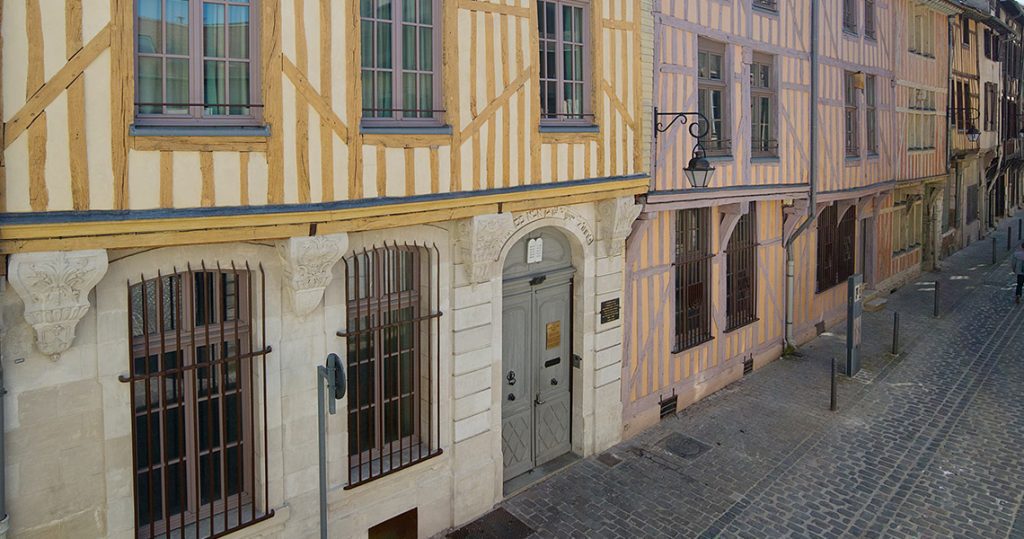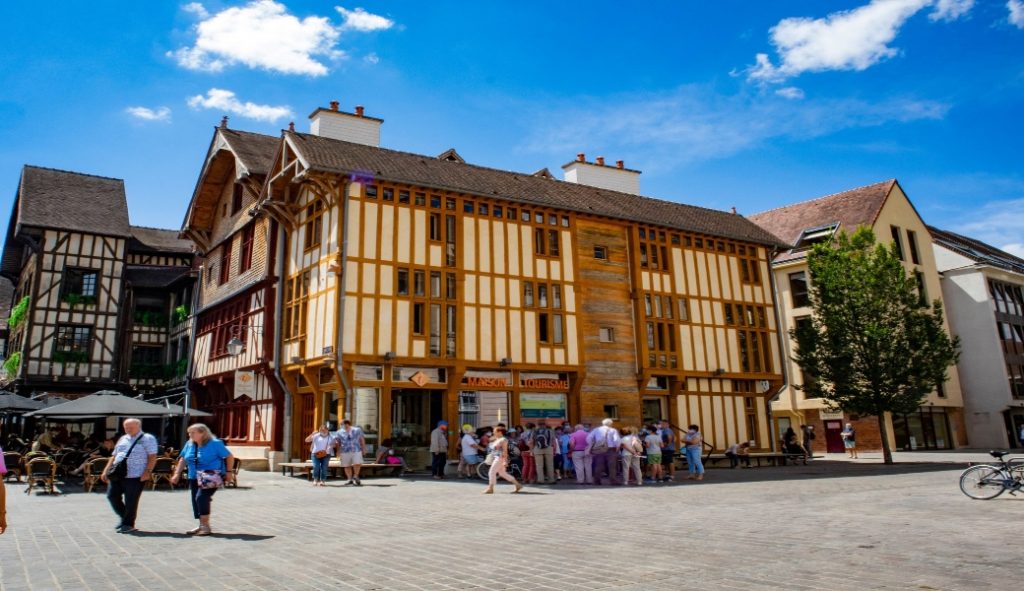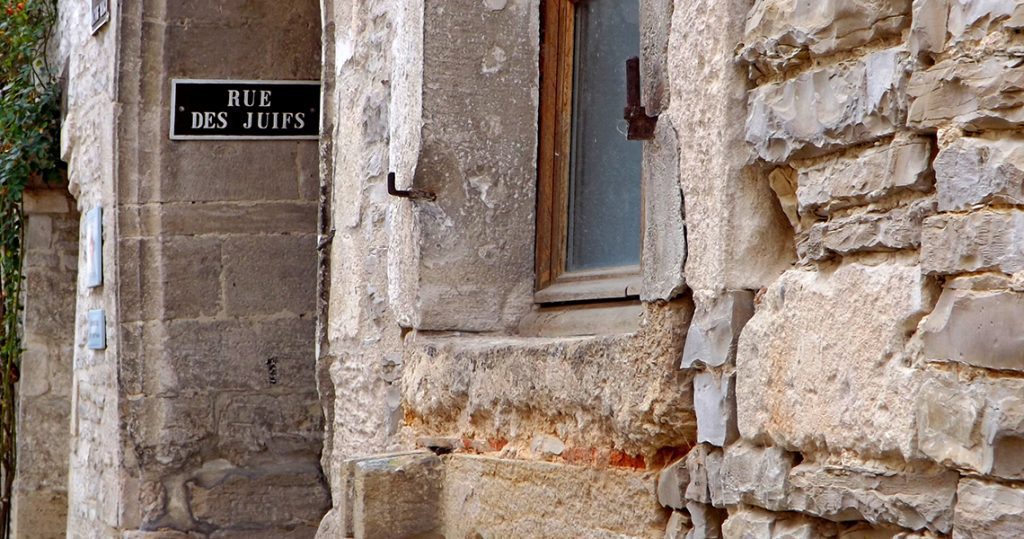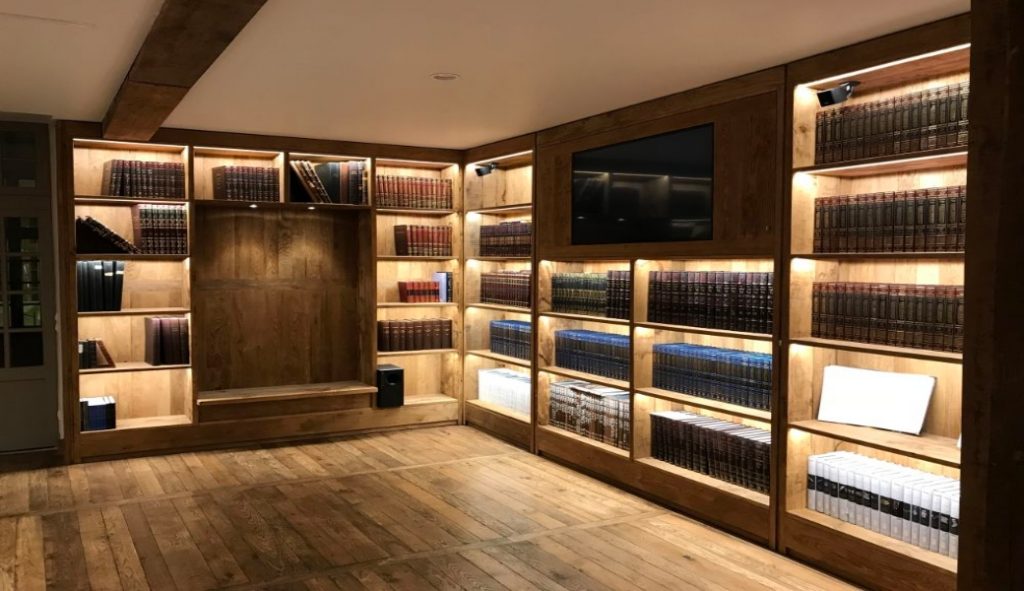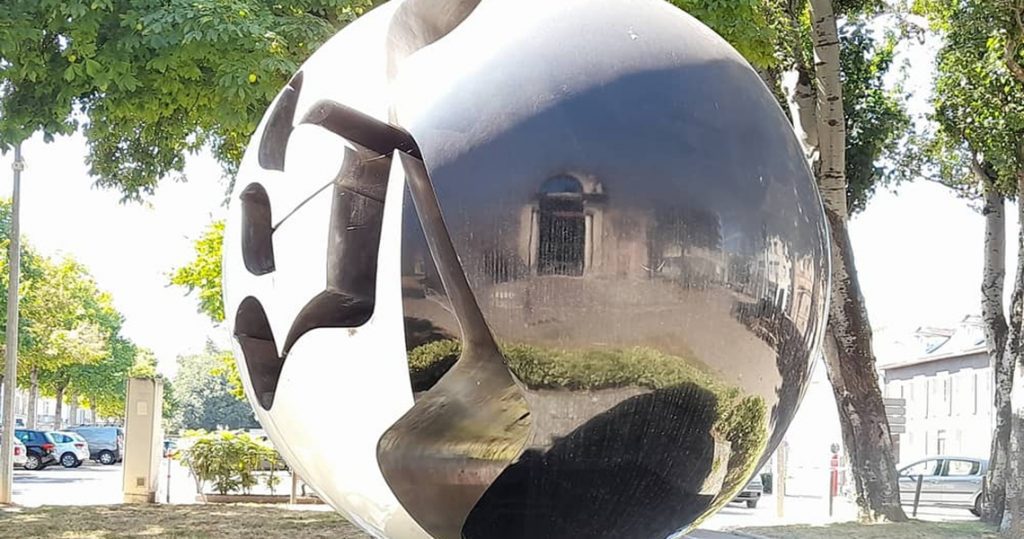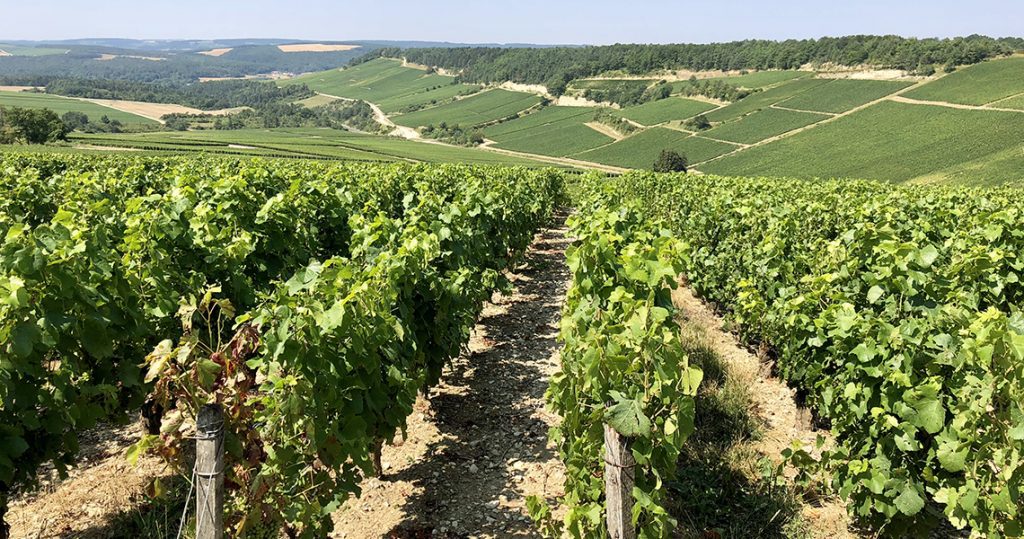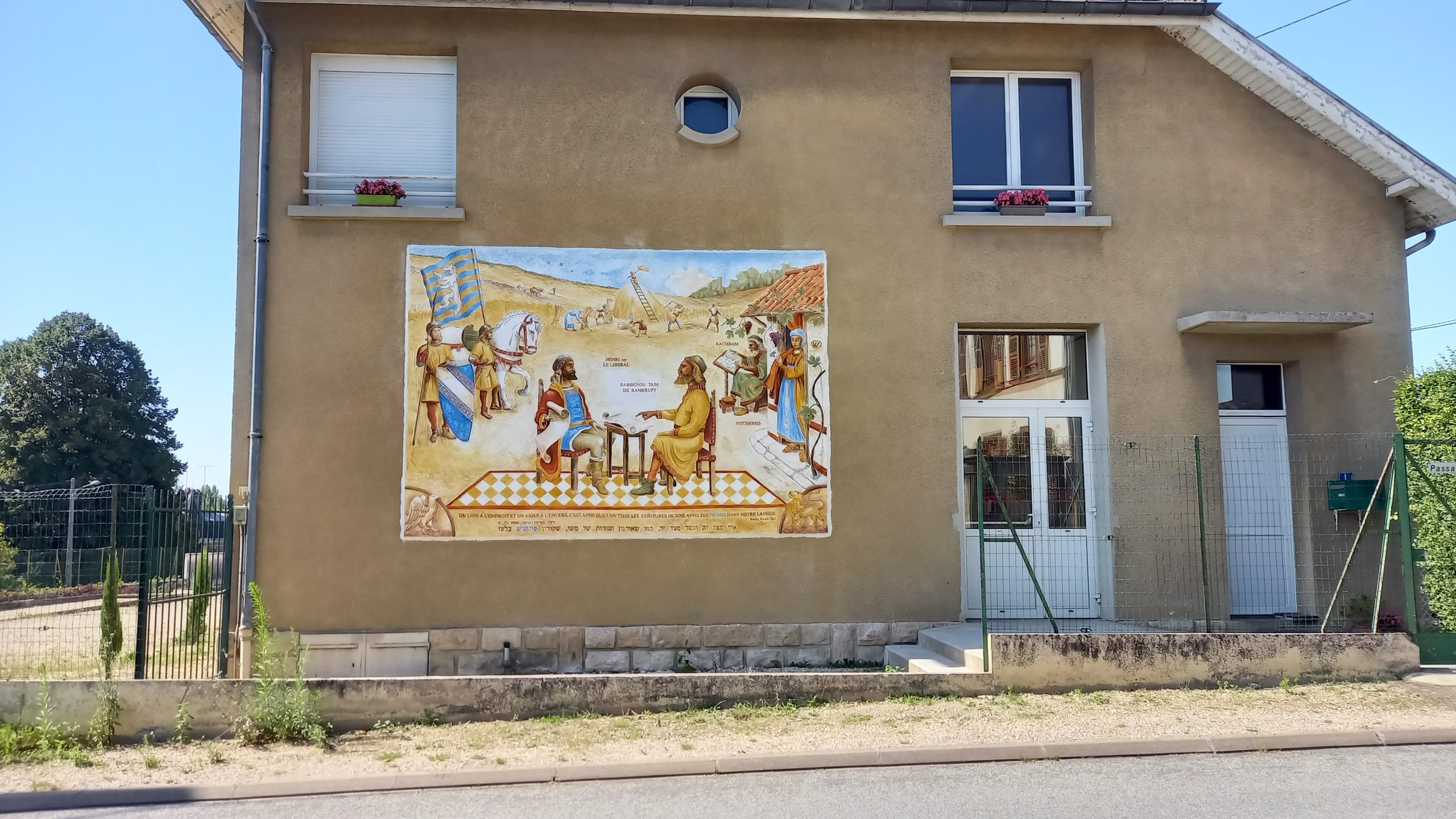Introduction
Aube county is the cradle of a universally recognized intangible Jewish heritage and part of the Route of Jewish Heritage since 2019. The Jewish Medieval Route of Rashi in Champagne welcomes you to experience this moving Jewish History through exhibitions and workshops, even if no building or cemetery remains from the prestigious time of Rashi (1040-1105) and the Tossafists’ school. Visiting Troyes and villages such as Ramerupt, Dampierre, Ervy-le-Châtel, or Villenauxe-la-Grande seems like walking with Rashi and his disciples through the pages of their commentaries, where Champagne area medieval lifestyle is constantly pointed out.
You are welcome to visit and pray into the splendid 17th-century synagogue building and meet the local Jewish community in Troyes. Rashi’s House permanent exhibition in Troyes synagogue invites you to a trip in medieval time: through an immersive scenography and reconstituted places, you will will discover and manipulate pedagogical and innovative digital tools to a better understanding of Rashi and his school. In Dampierre and soon Ramerupt and Lhuître, three villages located in the north of Aube county, cradles of the Tossafists school, you are awaited to discover a great artistic and touristic project around Frescoes, created in collaboration with artists and locals to remind the memory of Jewish former medieval communities. A stroll through history in Troyes former Jewish quarter is available with the Tourism Office. More guided tours and workshops are organized for groups in Aube county with CulturistiQ to experiment with Rashi and his disciples, encounters with nature, wine, honey, architecture and intellectual figures of Champagne in medieval times.
Come and visit us!
©Text by Delphine Yagüe – CulturistiQ
Pictures on top: ©ADT Aube, Rashi’s House/vineyards/ – ©Troyes Champagne Tourisme – ©CulturistiQ, mussy sur Seine/Moretti sculpture
Medieval Route of Rashi in Champagne in detail
The Medieval Route of Rashi in Champagne welcomes you in Troyes and Aube county, the cradle of a universally recognized intangible Jewish heritage from the 11th to 13th centuries and therefore part of the Route of Jewish Heritage. From this small corner of France, Rashi (1040-1105) and his disciples impacted the development of rabbinical literature throughout the world, a legacy that is still felt today! Inside their writings, Champagne area medieval lifestyle is constantly pointed out.
Between the 10th and the 14th century, the Counts of Champagne were at the origin of a rapid commercial expansion of the county, as well as an incredible intellectual and cultural explosion from the 12th century onward. The Great Champagne Fairs in Troyes, Bar-sur-Aube, Provins and Lagny were known as important centres for European commercial exchanges. The recognition of the Templar Order in Troyes in 1129, founded previously by Hugues de Payns (a small village close to Troyes) and the first Cistercian abbey located in Clairvaux founded in 1115 by Saint Bernard (50 km east of Troyes) are contemporary with the famous Rashi’ school.
Born in Troyes, Rashi studied in Mainz then Worms on the Rhine, with the most renowned masters of his time. He then came back to his native city where he developed a famous exegesis method on sacred texts, taken up by his disciples. Great masters came after him such as Rashbam, Rabbenou Tam from Ramerupt, his grandsons, Rabbi Isaac from Dampierre, his great grand-son, and many others spread in Champagne county, thanks to largely favorable living conditions. Numerous exchanges animated relations between Jewish and Christian communities who spoke the same language, practiced the same trades and lived in the same neighbourhoods.
The Counts communicated with the Sages of the Jewish communities of Champagne with special conviviality.
“Saint Frobert” is the current name of the Old Jewish quarter of Troyes. It gathers the streets St Frobert, Hennequin, du Paon, Audiffred, Cordeliers, Boucherat. The rue Saint-Frobert and the current district are named after the old church which is said to have been built on the site of a synagogue where Rashi is said to have taught. The rue du Paon probably housed his home. In the Middle Ages, the neighbourhood was known as the “Broce aux Juifs” which referred to the brushwood in the area, situated close to the countryside. In the 11th century, this area was home to several jewish families including Rashi’s. The Jewish community of Troyes was able to develop thanks to the protection granted to them by the counts of Champagne from the 11h to the 13th century between the reign of Thibault II and Thibault IV. If Jewish families gathered in this neighbourhood nothing distinguished them from the rest of the population. It was not until 1215 that the Church forced them to wear a distinctive sign on their clothes in the form of a piece of yellow cloth called a wheel (Rouelle).
The former Jewish cemetery where Rashi was buried, was situated in the area of Moretti’s sculpture (Preize district around the Theatre de Champagne), outside the walls of the medieval city, next to the Porte de la Girouarde, missing today (located at the time at the crossroads of Quai Dampierre and Rue de la Cité). Rashi died at age 65 on July 13, 1105. Buried in Troyes with full honours, his grave disappeared in the 16th century when the Jewish cemetery was demolished to enlarge the city.
Today, medieval synagogues no longer exist in Champagne.
After the Jews expulsion of 1394, a community relocated to Troyes at the end only at the 18th century. About 200 Jews were killed during World War Two and the small synagogue then situated in rue Charles Gros was destroyed by bombing. The decimated Ashkenaz community was then slowly replaced by Jews from North Africa.
Since 1960 a synagogue has been installed on rue Brunneval in Troyes. Today, visitors can attend religious services under the splendid glass roof covering the entire sanctuary of Aube unique synagogue, situated into a half-timbered 17th-century building in Troyes and meet some of the current 150 members of Aube Jewish community.
Visitors can also tour Rashi’s House, a permanent exhibition on Rashi and the Tosafists school story located inside the synagogue buildings. This exhibition features immersive scenography and invites visitors to use innovative educational and digital tools to better understand these scholars’ work and daily lives. Rashi’s House represents a first step towards promoting and enhancing the universal spiritual and historical heritage of former local Jewish communities.
Across from the synagogue, the Rashi European University Institute is a higher-educational institution, open to all, devoted to Jewish and Semitic studies and research on monotheistic religions where visitors can attend a lecture or special cultural event.
A stroll through history in Troyes former Jewish quarter is available with the Tourism Office. You will discover the Old jewish quarter and the Rashi Memorial created by the sculptor Raymond Moretti inaugurated in 1990, 950th anniversary of Rashi’s birth, on the occasion of the opening of the Rashi University Institute.This large sphere, 2.20m in diameter by 2.80m in height, faces the Champagne theater, close to the former Jewish cemetery where Rashi was buried. The monument rests on a hexagonal granite plinth which represents France. This black and white sculpture symbolises contrasts and presents in cutout, the acronym of Rashi. It was officially unveiled by Nobel Peace Prize winner Elie Wiesel. More guided tours and workshops are organized for groups, in the whole county with CulturistiQ to experiment with Rashi, encounters with nature, wine, honey, architecture, and intellectual figures of Champagne in medieval times.
In June 2022, a huge fresco has been painted on the city hall of Dampierre, a small village located in the north of Aube. It represents Rabbi Isaac of Dampierre, Rashi’s great grandson, one of the most important Tossafists leaders in medieval times. The fresco is accessible for free and will soon be part of a “Frescoes tour” with other artistic and pedagogical paintings to be created in 2023 and the following years in Ramerupt, Lhuître and 20 other villages of Aube county. This artistic and touristic project aims to revitalize the territory by highlighting the history of these towns that hosted Jewish communities by the time of the Counts of Champagne.
Visitors are invited to download a free touristic brochure in English available on the Aube website to know more about this Route experiences. Visiting Troyes and Aube villages such as Ramerupt, Dampierre, Mussy-sur-Seine, Ervy-le-Châtel or Villenauxe-la-Grande, will give visitors an opportunity for first-hand contact with this part of Champagne’s history, through various temporary events, exhibits or workshops.
©text by Delphine Yagüe – CulturistiQ
Explore the cities on this route


